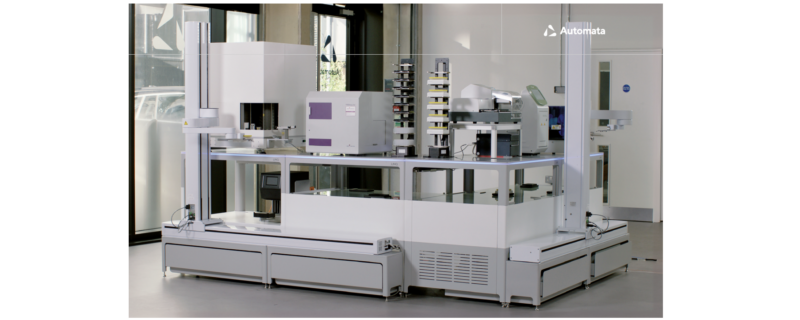
Employing Automation to Speed Cell Line Development
Mammalian cell line development is essential in the biopharmaceutical industry for applications such as vaccines, therapeutic proteins, recombinant therapies, and drug screening. Traditionally, this process has been manual, requiring months of repetitive, meticulous work prone to human error and contamination. With the growing demand for biotherapeutics, especially monoclonal antibodies, these lengthy development cycles can no longer keep pace.
As such, automation has become crucial for improving efficiency, increasing throughput, and reducing labor-intensive workflows, thereby allowing products to reach the market faster. The primary benefits of lab automation include better resource allocation, increased throughput, and higher quality data, leading to faster cell line development, easier scaling, and quicker client delivery. Most labs today adopt partial automation by incorporating individual automated tools, such as liquid handlers, into existing workflows. Others implement fully integrated systems for end-to-end automation. Whether partially or fully automated, lab automation is transforming the cell line development process.
The Benefits of Automation in Cell Line Development
Cell line development is a complex and labor-intensive process involving many steps, such as screening thousands of clones to identify high-yield producers with desired quality attributes. The workflow includes transfection, single-cell cloning, productivity assessments, and optimization. This time-consuming process, typically conducted manually, introduces limitations in throughput and scalability, as well as the potential for contamination and human error. The manual approach also puts strain on skilled workers and can result in burnout.
Automation helps to streamline these workflows, alleviating bottlenecks by freeing up skilled staff for higher-value tasks. Automated systems can increase throughput, operating continuously and reducing human error, while maintaining consistency and sterility. Automation also allows researchers to collect more comprehensive experimental data without the trade-offs associated with manual approaches, speeding up decision-making and development timelines.
Incorporating automation not only enhances productivity but also generates higher-quality data, which can be integrated into digital systems such as LIMS and ELNs. These systems provide full traceability and safeguard data throughout the development process, ensuring compliance and improving the efficiency of regulatory submissions.
Integrating Automation into Cell Line Development Workflows
 Establishing lab automation in cell line development can be challenging, but partnering with experts can simplify the process. Automata has published a white paper titled “Accelerating Cell Line Development Through Automation.” In this publication, Automata describes their methodical, modular approach to incorporating automation into cell line development workflows. Instead of automating an entire process all at once, which can result in longer implementation times and a higher risk of failure, Automata focuses on automating the most critical and frequently used workflows first. This approach enables a quicker return on investment by addressing key challenges efficiently. After successful validation, additional layers of automation can be introduced to increase capacity and functionality. This may include incorporating advanced analytics that were previously considered unattainable. Automata’s modular lab automation solutions offer flexibility and scalability, easily adapting to various workflows and allowing rapid expansion to future-proof lab capacity.
Establishing lab automation in cell line development can be challenging, but partnering with experts can simplify the process. Automata has published a white paper titled “Accelerating Cell Line Development Through Automation.” In this publication, Automata describes their methodical, modular approach to incorporating automation into cell line development workflows. Instead of automating an entire process all at once, which can result in longer implementation times and a higher risk of failure, Automata focuses on automating the most critical and frequently used workflows first. This approach enables a quicker return on investment by addressing key challenges efficiently. After successful validation, additional layers of automation can be introduced to increase capacity and functionality. This may include incorporating advanced analytics that were previously considered unattainable. Automata’s modular lab automation solutions offer flexibility and scalability, easily adapting to various workflows and allowing rapid expansion to future-proof lab capacity.
Automata focuses on creating flexible, scalable systems that can adapt to various workflows. Their solutions combine software, hardware, and expert consultation, making automation accessible for labs of all sizes. Unlike many closed automated systems, Automata’s vision integrates robotics with traditional lab layouts, making automated workflows accessible to both humans and machines. This dual-purpose system maximizes resource use and makes automation more accepted by staff, easing the transition to a fully automated process.
The Future of Cell Line Development
Accelerating cell line development is essential to meet the growing demand for cell-based vaccines, biotherapeutics, and drug discovery. Companies that invest in automation technologies can streamline workflows, reduce costs, and speed up commercialization. As lab automation becomes more accessible, it will play a crucial role in future lab operations, with fully automated facilities likely becoming the norm. Automation vendors continue to develop adaptable, innovative products that address the industry’s core challenges, further supporting this trend toward increased lab automation. Top life science laboratories have utilized Automata’s blend of scientific expertise and technological innovation to develop walk-away automation and data management solutions, allowing labs to scale their operations with precision.
To read the full eBook, please visit Accelerating Cell Line Development Through Automation